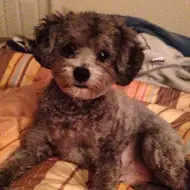
Browse Categories
- Dog Boot Camps
- Test
- Test
- Dogs Please Clicker Training
- Pet Insurance Comparison
- Exercising Pets With An E Scooter
- 10 Reasons Why Guinea Pigs Are Wholesome Little Pets
- Why You Should Use a Shed to House Your Pet
- How can Dog Owners Keep their Carpets Clean?
- How to Keep Your House in Order With Large Pets
- What is the Best Way to Feed a Puppy to Keep Them Healthy
- Pets Please
- All Animals and Pets
- Dogs and Puppies
- Cats and Kittens
- Birds
- Fish
- Reptiles
- All Other Small Pets
- Claws 'N' Paws Events
- PetsInLimbo/Greys4PetsInc.
News Search
PetsPlease News and Advice
Dogs Please Clicker Training WEEK 4
Week 4
How are you getting on?
Your training may, at this point, be going swimmingly or you may have ground to a halt. If it’s the latter then you may recognize what I’m going to tell you next. I think it’s time that we mention what happens when a dog is confused.
When you are training a dog, to do anything new, he will undoubtedly be confused at some points, we are very different species’ after all. The idea though is to avoid, or at least minimize, confusion as much as possible. The best dog trainers always set their students up to succeed because this builds canine confidence and a confident dog learns better, easier and with far more enthusiasm.
You can be certain that your dog is confused if he starts to display the following behaviours;
Displacement Behaviour
Displacement behaviour is easily misread but it is obvious when you know what you are looking for. This is the behaviour which is displayed when the dog is confused and hasn’t a clue what to do next.
Here are the signs that your dog is confused;
· Sniffing the floor
· Walking away
· Looking off into the distance
· Yawning
· Scratching himself, sometimes frantically.
When your dog carries out these behaviors he is actually telling you that he has no idea what you want. Your job is to respond with a clearer request, maybe a lure, or to break the task down into smaller tasks and shape the act.
The idea is to simply make things easier for him because displacement behavior occurs when you are expecting too much from your dog. If you don’t help him along at this point then he will start to become stressed and a stressed dog will never learn, he will be too busy being worried.
Signs of Stress in your Dog
When a dog starts to become stressed his behavior will change from displacement acts to something that we call calming signals. These are the subtle signals that dogs display to communicate and they are often missed by the human eye.
Calming signals are usually always shown before the signs of stress become obviously apparent. They progress something like this;
· Glancing away
· Licking lips
· Yawning
· Trying to leave a situation
· Starting to pant
They then move on to heavier panting, drooling, staring and eventually when a dog becomes really stressed his eyes will glaze over. At this point the dog may even go into emotional shutdown or if he feels threatened he will growl in return. If a growl is ignored a dog will bite.
No training session should ever progress to the dog that needs to use calming signals. The idea is to set a dog up to succeed because when stress starts learning ability stops.
Dog Training from a New Angle
At this point I would like you to watch a random video or two, simply from you tube, where a dog is being trained for the camera. Just type in the term ‘dog training’ as a search term. Turn the sound down so you are not influenced by the trainers voice and really watch the video to see if you can tell how the dog is feeling. Apply your new knowledge of calming signals and ask yourself if the dog is;
1. Happy
2. Confident
3. Being trained fairly
Then come along to Pets Please with your video link, and theory, for discussion.
Targeting To Your Hand
For the rest of the week I would like you to teach your dog a new trick by using the clicker. I would like you to target your dog to your hand. This will come in handy for everything that you teach from this point on.
The idea of targeting your dog to your hand is to prevent treat obsession. Targeting is wonderful and very useful for many things, at this point though I want you to simply teach your dog to nudge your hand with his nose using the following steps.
1. Hold a treat in your hand then close your fist around it and wait.
2. When your dog touches your hand with his nose click and open your hand to give him the treat. It doesn’t at this stage have to be a perfect nudge, remember what we said about shaping a behavior, just the briefest of touches and you can click. Repeat many times and withhold the click until the dog is nudging your hand for a click.
3. Next you can show your dog a closed, empty, fist then click in the same way when he nudges but this time feed him from your other hand.
4. Practice this many times and soon your dog will be completely targeted to your hand. This is great for luring and even if you want to teach your dog to respond to hand signals.
We look forward to hearing all your tales of successful targeting.
See you next week!
Wednesday 15th April 2015

